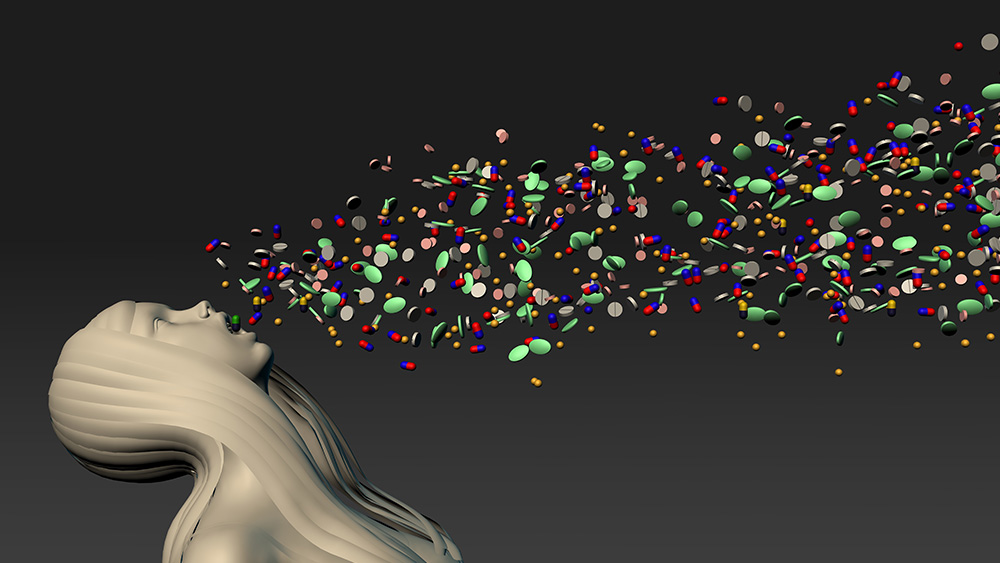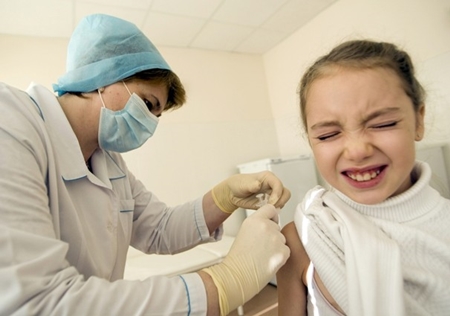The Autism blame game: This time, it’s the womb
07/10/2019 / By News Editors

In the 1950s, when autism was not yet a household word, the day’s leading psychiatrists and psychologists propagated the “refrigerator-mother hypothesis.” According to this theory, autism—rare at the time—was the result of emotionally distant mothering. As the condition now known as autism spectrum disorder (ASD) began attaining epidemic proportions (with about 1 in 36 children diagnosed with ASD as of 2016 versus perhaps 1 in 10,000 in the early 1980s), researchers eventually found the refrigerator-mom paradigm to be wanting and turned their attention to other theories—but still often remained focused on maternal risk factors.
(Article republished from ChildrensHealthDefense.org)
One of the narratives to gain recent prominence is that autism begins in the womb. Although the womb hypothesis is grounded in the neurodevelopmental reality that what happens during pregnancy can have “significant consequences for brain and behavior throughout the remainder of the lifespan,” its media proponents seem to be using it more as a smokescreen.
How does the smokescreen work? First, with the womb front and center, it becomes possible to downplay the fact that the preponderance of autism cases are regressive—that is to say, most often arising in children who were previously developing completely normally. The prenatal spotlight also makes it easier to deflect attention away from the fact that autism’s explosion on the scene coincided with key trends such as the escalating overuse of childhood vaccines containing toxins like aluminum and glyphosate—while helpfully making it difficult to get overly specific about environmental exposures at all. As one government researcher has stated, “[B]y the time children are diagnosed [with autism] at age 3 or 4, it’s hard to go back and know what the moms were exposed to.”
Researchers have not hesitated to suggest that virtually anything and everything can alter the developing brain—“social and environmental toxins, diet, drugs of abuse”—and especially, individual rather than corporate behavior. In this slippery context, is it any wonder that the media keep latching onto moms as convenient scapegoats?
… it would be impossible to predict how often a prenatal immune response might lead to fetal brain damage and suggested that vaccinating an entire population of pregnant women could affect thousands of children.
Not off the hook
Ironically, hypothesizing that autism’s origins are strictly prenatal does very little to let vaccines off the hook. The Centers for Disease Control and Prevention (CDC) recommends that all pregnant women get the influenza and Tdap (tetanus-diphtheria-pertussis) vaccines, even though neither has ever been tested or licensed specifically for use during pregnancy.
… hypothesize that exposure in early life to infection or environmental toxins prompts dysfunction of important, long-lived brain-immune cells called microglia and thereby contributes to the development of neurodegenerative disorders later in life.
Paul Patterson, a researcher who studied something called maternal immune activation (MIA), long ago established that there is a relationship between prenatal infectious or environmental exposures and ASD-like neurodevelopmental deficits in the offspring. When the CDC stepped up its efforts to vaccinate pregnant women in the mid-2000s, Patterson warned that it would be impossible to “predict how often a prenatal immune response might lead to fetal brain damage” and suggested that “vaccinating an entire population of pregnant women could affect thousands of children.”
In 2014, pharmaceutical industry authors alluded to the potential for a pregnant woman’s response to vaccination to trigger detrimental consequences in babies, admitting that “long-term follow-up data on the incidence of neurodevelopmental disorders in the offspring of mothers vaccinated during pregnancy” were “scant.”
Work by Harvard researchers indicates that the risks of undue immune stimulation are not confined to the prenatal period. These researchers hypothesize that exposure in early life to infection or environmental toxins prompts dysfunction of important, long-lived brain-immune cells called microglia and thereby contributes to the development of neurodegenerative disorders later in life. Proposing a sort of one-two punch, they suggest that a “first hit” that “likely begins perinatally” creates an “underlying vulnerability,” and a “second hit” later “unmasks the full pathology” and “kicks the microglia into overdrive.” They also propose that someone who has not received the “first hit” may not react with the same kind of “exaggerated” inflammatory response later on. Drawing out the implications of this work, a researcher has argued that it “certainly should make us rethink our vaccine policy, especially when it comes to vaccinating pregnant women and newborn babies.”
Broadening the discussion
“Autism science [has] pursued the wrong branches at almost every turn.” This is the assertion of authors Dan Olmsted and Mark Blaxill in their book, The Age of Autism. The two authors note that although there was a clearly apparent pattern of occupational chemical exposures in the families of the earliest autism cases, researchers of the time preferred to accuse mothers of harming their children through inadequate parenting. Later generations of researchers again evaded consideration of environmental factors by accusing mothers of passing on faulty genes, even though genes “have been shown to account for only a fraction of ASD diagnoses.”
At present, mainstream science allows consideration of some environmental determinants of autism—but only some. Thus, it has become acceptable to point the finger at air pollution, pregnancy medications and some chemicals. However, it is also still fashionable to blame mothers for their “toxic wombs.” It is time to put a halt to both victim blaming and evasiveness and recognize that an autism/ASD diagnosis is a cover term for damage caused by environmental toxins that need to be explicitly studied, named and eliminated.
Read more at: ChildrensHealthDefense.org
Tagged Under: Aluminum, autism, CDC, children's health, glyphosate, toxins, vaccine injury, vaccines
RECENT NEWS & ARTICLES
COPYRIGHT © 2017 DANGEROUSMEDICINE.COM
All content posted on this site is protected under Free Speech. DangerousMedicine.com is not responsible for content written by contributing authors. The information on this site is provided for educational and entertainment purposes only. It is not intended as a substitute for professional advice of any kind. DangerousMedicine.com assumes no responsibility for the use or misuse of this material. All trademarks, registered trademarks and service marks mentioned on this site are the property of their respective owners.



















